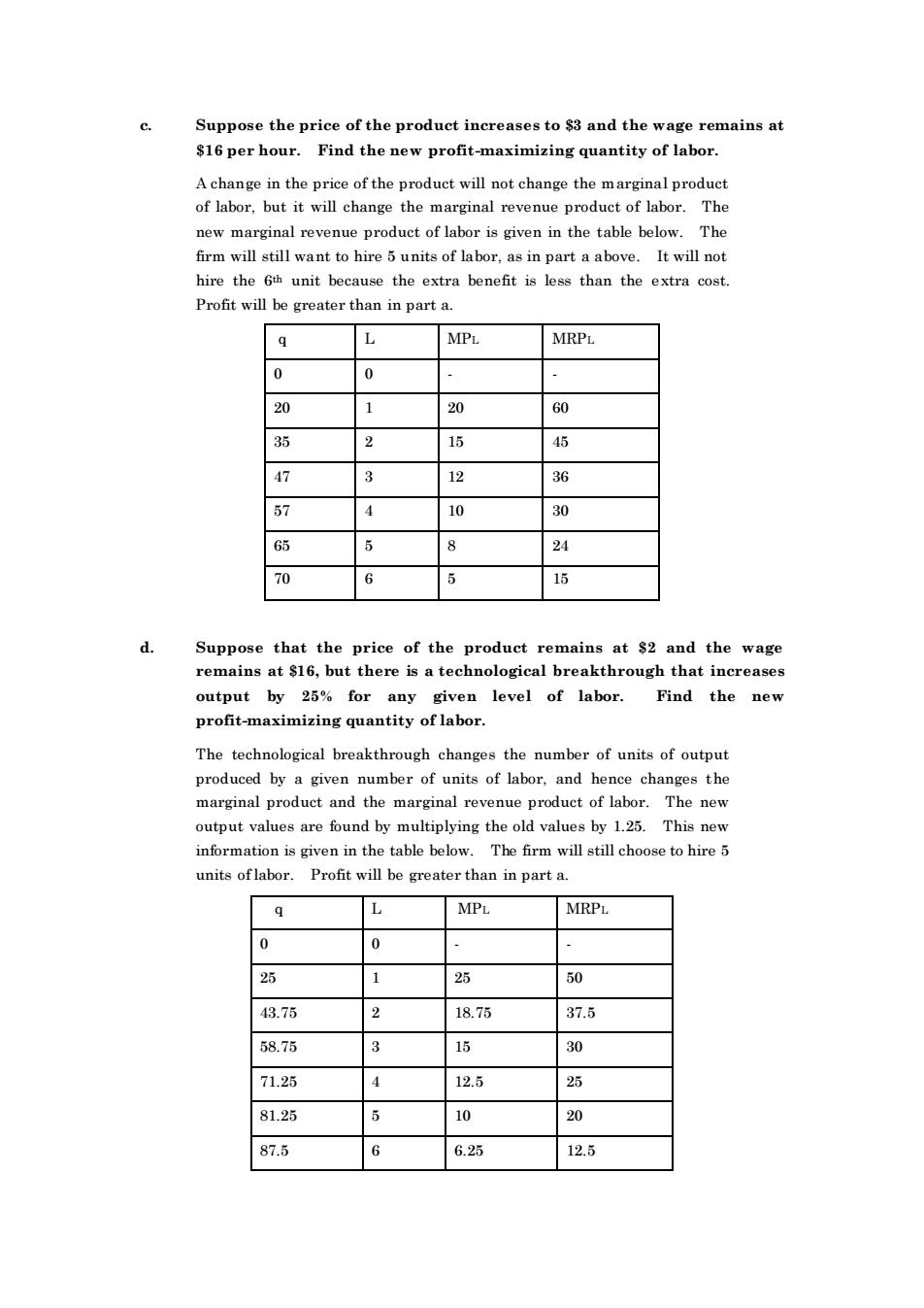正在加载图片...

Suppose the price of the product increases to $3 and the wage remains at $16 per hour. Find the new profit-maximizing quantity of labor price of the product will not change the marginal produc change theardt The new marginal revenue product of labor is given in the table below.The firm will still want to hire 5 units of labor,as in part a above.It will not hire the 6th unit because the extra benefit is less than the extra cost. Profit will be greater than in part a. L MPL MRPL 20 60 35 2 15 45 47 3 12 36 57 4 10 30 65 24 70 15 that the price of the oduct remains at $2 and the wag rem $16 h that increa output by 25%for any given level of labor. Find the new profit-maximizing quantity of labor. The technological breakthrough changes the number of units of output produced by a given number of units of labor.and hence changes the marginal product and the marginal revenue product of labor.The new are found by tiplying the values by 1.25.This nev informa n is given in the table below The firm will still choose to hire 5 units of labor.Profit will be greater than in part a. L MPL MRPL 0 0 25 1 50 43.75 2 1876 37.6 58.75 3 30 71.25 4 12.5 25 81.25 5 20 87.6 6.25 12.c. Suppose the price of the product increases to $3 and the wage remains at $16 per hour. Find the new profit-maximizing quantity of labor. A change in the price of the product will not change the marginal product of labor, but it will change the marginal revenue product of labor. The new marginal revenue product of labor is given in the table below. The firm will still want to hire 5 units of labor, as in part a above. It will not hire the 6th unit because the extra benefit is less than the extra cost. Profit will be greater than in part a. q L MPL MRPL 0 0 - - 20 1 20 60 35 2 15 45 47 3 12 36 57 4 10 30 65 5 8 24 70 6 5 15 d. Suppose that the price of the product remains at $2 and the wage remains at $16, but there is a technological breakthrough that increases output by 25% for any given level of labor. Find the new profit-maximizing quantity of labor. The technological breakthrough changes the number of units of output produced by a given number of units of labor, and hence changes the marginal product and the marginal revenue product of labor. The new output values are found by multiplying the old values by 1.25. This new information is given in the table below. The firm will still choose to hire 5 units of labor. Profit will be greater than in part a. q L MPL MRPL 0 0 - - 25 1 25 50 43.75 2 18.75 37.5 58.75 3 15 30 71.25 4 12.5 25 81.25 5 10 20 87.5 6 6.25 12.5